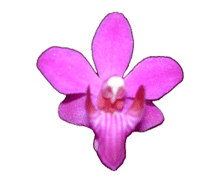Orchid Repotting Calendar
The most important factor in the timing of orchid repotting is to repot after the bloom and as the new growth is emerging. Repotting when an orchid is in active growth provides the plant with its best opportunity to settle quickly into its new media. The plant will then grow and flower in fresh media thereby eliminating the need to do an emergency repotting at a later time because the mix is too broken down. We want to make sure that the orchid can make it through a full bloom season without requiring repotting. Some genera, most notably Phalaenopsis, are very forgiving about when they are repotted and can be repotted pretty much any time they are not in bloom.
Below is a chart of the general repotting times for genera in our collection. These are not cast in stone, but are offered here as a general guideline. The most important thing is to observe the plant and repot it after it blooms and as it begins its new growth.
| Genera | Abbreviation | Optimal Repotting Times |
| Brassavola | [B.] | Winter - Spring |
| Cattleya | [C.] | Spring / Fall |
| Catasetum | [Ctsm.] | Spring |
| Cymbidium | [Cym.] | Spring |
| Dendrobium | [Den.] | Spring |
| Doritaenopsis | [Dtps.] | Fall - Winter |
| Epidendrum | [Epi.] | Spring |
| Encyclia | [Enc.] | Spring |
| Laelia | [L.] | Spring |
| Ludisia | [Lds.] | Winter - Spring |
| Lycaste | [Lyc.] | Spring |
| Masdevallia | [Masd.] | Spring |
| Miltonia | [Milt.] | Fall |
| Miltoniopsis | [Miltnps.] | Fall |
| Odontoglossom | [Odm.] | Winter- Spring |
| Oncidium | [Onc.] | Winter - Spring |
| Paphiopedilum | [Paph.] | Spring |
| Phalaenopsis | [Phal.] | Spring - Summer |
| Phragmipedium | [Phrag.] | Spring |
| Psychopsis | [Psychp.] | Spring |
| Sophronitis | [Soph.] | Spring |
| Stanhopea | [Stan.] | Spring / Fall |
| Vanda | [V.] | Fall |










